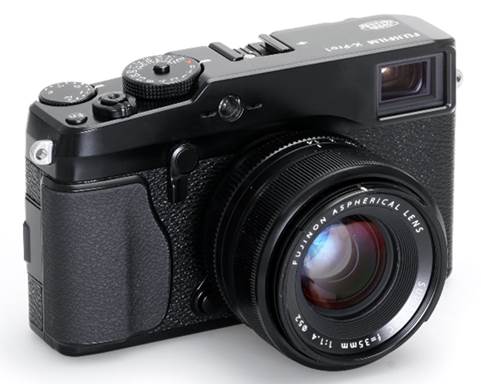There’s no denying that the Fujifilm X-Pro1
is one of the very best Compact System Cameras on the market. When we tested it
in May last year we gave it a score of 92% and a Gold award and described the
image quality as some of the best we’d seen from any camera with an APS-C
sensor. The only area it really fell down was performance where it scored 16 in
comparison to 20 in image quality with criticisms over its focus system being
prominent.

There’s
no denying that the Fujifilm X-Pro1 is one of the very best Compact System
Cameras on the market
If you were happy to negotiate these
performance quirks you would find the Fujifilm X-Pro1 is still a capable
performer, as I had found out during relatively extensive usage during its time
in the office. However, when news came through of a firmware update (Version
2.00) which Fujifilm promised would fix the majority of the performance issues
I certainly wasn’t complaining. Even better - the arrival of the updated X-Pro1
into the office just so happened to coincide with a trip to Russia that I’d had
planned for a few months, thus presenting the perfect opportunity to put the
new firmware through its paces.
The difference in performance between the
previous firmware and the new is almost instantly, and most welcomely,
noticeable. One of the headline improvements Fujifilm claims is with regards to
AF performance. Although the original X-Pro1 was hardly a slouch in this
department, it was certainly lacking in comparison to competing CSCs. There’s
now little noticeable delay in acquiring focus, while speed has also been
improved with regards to image write time and processing, both of which once
again are more in line with comparable CSCs.

The
changes haven’t made it a totally different camera, but they have ironed out
the creases and made drastic improvements on what was already one of the best
cameras in its class
Another area that has received some
much-needed TLC is the X-Pro1’s manual focus. The original model suffered from
a relatively unresponsive manual focus ring, which needed a great number of
turns before a subject came into focus. This is no longer the case, and the
manual focus ring generally feels more responsive.

The
original model suffered from a relatively unresponsive manual focus ring, which
needed a great number of turns before a subject came into focus.
There are numerous other performance
tweaks, although they’re probably too minor to list here save to say that the
new firmware has improved the X-Pro1 in a wholesale fashion. The changes
haven’t made it a totally different camera, but they have ironed out the
creases and made drastic improvements on what was already one of the best
cameras in its class.
|
Information
·
Price: $1,827
·
Website: www.fujifilm.com
Specifications
·
Fujifilm-designed 16MP APS-C X-Trans CMOS
sensor
·
Novel color filter array to suppress color
moiré, no optical low-pass filter
·
EXR Processor Pro image processor
·
Dual-magnification hybrid optical / electronic
viewfinder
·
Analogue dials for shutter speed and exposure
compensation on top of camera
·
All-new, fully electronic X lens mount; 17.7mm
flange-to-sensor distance
·
Three 'XF' lenses at launch: XF 18mm F2 R, XF
35mm F1.4 R, and XF 60mm F2.4 R Macro
·
Prime lenses have traditional-style aperture
rings (1/3 stop increments) and large manual focus rings
·
Revised rear-panel control layout
·
On-screen 'Q' control panel and redesigned
tabbed menu system
·
Focal-plane shutter, 1/4000 sec max speed
·
3.0" RGBW 1.23M dot LCD
|